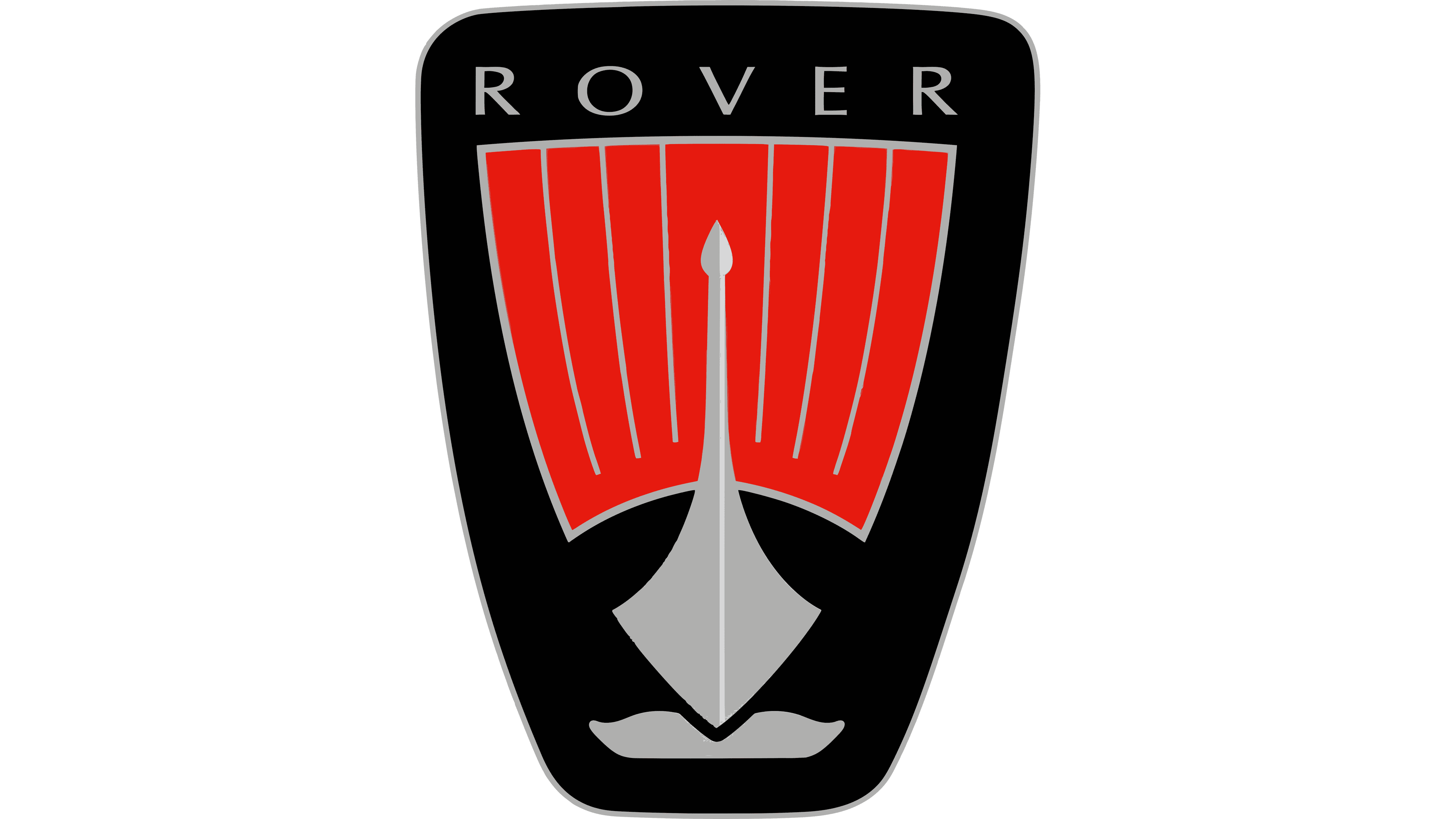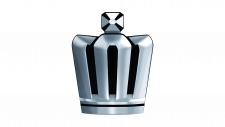Rover Logo
Rover emerges as a distinguished brand in the automotive industry. The company took root in the United Kingdom, showcasing British engineering prowess. Its foundation traces back to a quest for creating vehicles that blend style with functionality. The creators envisioned automobiles that not just serve transportation needs but do so with elegance and reliability.
Meaning and history
Rover, a historic British car brand, has seen various transformations. Initially, Rover Co. was founded in 1878, focusing on bicycles. Transitioning to automobiles in 1904, they became known for innovation. Post-World War II, Rover flourished, introducing the iconic Land Rover in 1948. Financial struggles in the 1960s led to a merger, forming British Leyland in 1968. This period marked decline and management issues. In 1986, British Leyland was privatized, renamed Rover Group. BMW acquired Rover in 1994, aiming to revive the brand. However, by 2000, facing losses, BMW sold Land Rover to Ford and the rest to the Phoenix Consortium, renaming it MG Rover. Sadly, MG Rover collapsed in 2005, ending car production. The Rover marque was then acquired by Tata Motors in 2008, as part of their Jaguar Land Rover purchase. Rover’s legacy lives on through Jaguar Land Rover’s continued success.
What is Rover?
Rover stands as a symbol of British automotive heritage, known for its luxurious and reliable vehicles. It represents a blend of innovation, style, and quality craftsmanship. Initially starting in a different sector, Rover seamlessly transitioned into the automotive industry, leaving a lasting mark with its distinguished cars.
1884 – 1902
The image showcases a classic shield emblem, bearing the inscription “THE ROVER” prominently at its center. Below, “THE ROVER CO” is featured, emphasizing the company’s focus. The word “COVENTRY” arches gracefully along the bottom edge, indicating the brand’s origins. This emblem, steeped in heritage, employs a starkly simple monochromatic palette. Its font, uneven and reminiscent of hand-craftsmanship, adds a personal touch to the logo. Overall, the design conveys time-honored tradition and British automotive history.
1902 – 1922
The updated emblem introduces regal flair with a crown resting atop, hinting at an ‘Imperial’ stature. “IMPERIAL ROVER” dominates the shield in bold, fiery-hued letters, exuding confidence. Beneath, “THE ROVER CO LIMITED COVENTRY” is stated with precision, indicating the company’s official status and origin. This variant of the logo conveys a more established and authoritative brand presence, using color contrasts and added elements to denote grandeur and heritage.
1922 – 1923
The figure stands proudly, a knight cast in metal, evoking chivalry and resilience. In one hand, a slender sword suggests readiness for noble endeavors. The shield, emblazoned prominently, tells of protection and strength, a metaphor for durability. This knight, a symbol perhaps of the Rover brand, offers a three-dimensional embodiment of the values of defense and steadfastness. A silent guardian, it alludes to a bygone era, tying the past to present craftsmanship.
1923 – 1924
From knight to name, the transition is stark. We now see “ROVER” sculpted in sleek, modern letters. The font is fluid, its strokes conveying motion and progress. This design speaks to innovation, leaving the medieval connotations behind. It’s a visual leap, from historical to contemporary, mirroring a brand moving forward.
1924 – 1929
The image presents a cursive, flowing rendition of the word “Rover”. The letters are stylized with artistic flair, suggesting elegance and fluidity. Its gold color implies luxury and quality. The logo appears almost calligraphic, reminiscent of handwritten script from a bygone era, evoking the brand’s rich heritage. Each character is connected, symbolizing continuity and cohesion within the brand’s identity. This design blends tradition with a personal, almost signature-like touch.
1925 – 1929
Boldness returns in this incarnation. “ROVER” now stands central within a shield, its font stout and assured. A deep blue encases the letters, suggesting depth and stability. The contrast between the blue and silver tones conveys clarity and focus. This design simplifies, choosing solid presence over flourish—a statement of modernity and assurance.
1929 – 1947
This logo is a harmonious blend of maritime and noble symbolism. Central to the design is a Viking ship, presented in a stark black silhouette with a pronounced prow and a square sail. A vertical line divides the sail, transforming it into a shield-like appearance, with “ROVER” boldly inscribed in white. A silver Viking helmet crowns the ship above, infusing it with a warrior-like heritage. Below, fluid, blue wave-like flourishes decorate the base of the logo, symbolizing movement and travel over water.
1947 – 1949
The emblem presents a frontal view of a seafaring vessel, rendered in stark black, with a prominently displayed red sail inscribed with “ROVER” in bold white letters. Above the vessel, a knight’s helmet in silver suggests valor and tradition. Surrounding the ship are stylized blue waves, conveying the ship’s mastery over the sea. The entirety is framed by a golden outline, which conveys a sense of prestige and grandeur.
1949 – 1959
The emblem evolves subtly, maintaining its structure while shifting its hues. The knight remains, more defined against the silver and black crest. “ROVER” is now encased in a rich, crimson banner, providing a striking contrast. Below, the blue waves turn a darker shade, suggesting depth and mystery. Silver detailing on the crest enhances the textural interplay, offering a refined metallic finish. This emblem blends the knight’s stoicism with a more pronounced color scheme.
1959 – 1963
The emblem sharpens into a sleek, triangular form. A knight’s armor and the number “16” take center stage, flanked by waves. “ROVER” sits boldly above, cradled in red. This design opts for a more dynamic and streamlined aesthetic, emphasizing speed and forward motion. The knight’s presence, paired with the numeral, hints at a series or model, suggesting precision and performance. A modern evolution, it points the brand towards the future.
1963 – 1965
The triangular emblem features a sophisticated palette of gold, black and dark red. The “ROVER” name crowns the top in gold serif letters. Below, a Viking ship figurehead adorns a red and gold shield, framed by stylized waves. This design sheds the armor and number, favoring a more symbolic maritime theme. The overall effect is one of regal sophistication, combining nautical elements with luxurious color contrasts. It’s a blend of tradition and affluence.
1965 – 1976
The emblem transitions to monochrome: a stark black backdrop with a white Viking ship and flag. Simplified lines replace previous details. The ship’s figurehead, now the focal point, stands above crossed oars. The design eschews the previous color vibrancy, opting for minimalist contrast. This logo suggests a return to foundational elements, a stylized nod to Rover’s enduring journey. It’s a distillation of brand identity into its purest form.
1976 – 1979
This emblem remains unchanged from the prior one provided, keeping the monochromatic scheme with its Viking ship symbol poised above crossed oars. The design retains its minimalistic contrast, with no new alterations evident in the transition. The consistency signifies a period of brand stability, where maintaining a recognizable image is key. The logo endures, encapsulating Rover’s identity in its simplicity and continuity.
1979 – 1989
The latest emblem reintroduces color: a striking combination of black, red, and gold. “ROVER” is boldly displayed at the top in gold lettering. A Viking ship returns in a red shield, the figurehead now gilded, accompanied by golden oars over a black background. The emblem’s outline, a softened shield, creates a more modern and polished aesthetic. This logo reimagines historical motifs with a contemporary and luxurious twist, emphasizing a rich heritage with a new vibrancy.
1989 – 2003
The emblem’s color scheme is now more subdued, featuring deeper reds and more pronounced golds against a black background. The “ROVER” lettering at the top remains golden, but the Viking figurehead and oars beneath it are now richer in hue. The flag atop the ship bears a distinctive emblem, adding an extra layer of identity. This design iteration subtly enhances the logo’s sophistication, bringing a touch of gravity and history to the fore.
2003 – 2005
A bold, bright red and a sleek grey refresh the emblem, replacing the gold tones. “ROVER” stands out in white at the top. The design streamlines the Viking ship element to just the sail and prow, crafting a more abstract and modern symbol. This evolution simplifies the design further, favoring bold colors and clean lines. It’s a contemporary take on a classic, emphasizing clarity and impact in the brand’s visual identity.



























